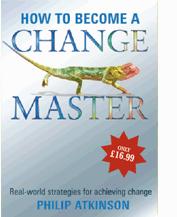Strategy Review: Without Focus any Path will do

Avoiding the Rudderless Business
As change impacts upon activities daily and forces us to consider our strategy and tactics, the average organisation has to be fairly adept at adapting to change.
However, in some organisations the opposite occurs. For instance, where the intensity of change has actually slowed down the capacity of the organisation to react swiftly thus leaving the business virtually rudderless.
Speed is a Competitive Differentiator
Speed and accuracy of decision making is critical for any business and as soon as this process is allowed to slow down, confidence in the whole business is diminished.
The capacity to make informed or even intuitive decisions is the cornerstone and characteristic of a lively enterprise. If an organisation cannot influence its future, it is merely a twig swept along by the swell or tide of events.
Be Decisive, Shape Events
For an organisation to flourish it has to determine its future, and this is based upon making decisions about how the future will be shaped rather than being shaped by events considered outside its control.
When things are happening too fast in the marketplace for the decision-making process to keep pace let alone anticipate change, it is time to think again about whether your business is an ‘influencer’ or ‘follower’ in your market.
If the locus of control for its future largely falls outside the organisation, it is only a matter of time before the actual existence of the business is put under threat. This failure to make decisions and act quickly enough can be the death knell for many organisations.
Benefits of Strategic Planning
There are critical incidents in an organisation’s life when a ‘wake up call’ can summon top team members to reconsider the direction for their business.
We would like to think that this was a positive response to wanting to control more of their market, rather than a reactive strategy geared to minimising loss.
Those who commit to take control can achieve a great deal. General Electric, currently the largest company in the world with consistent almost double digit profit levels, has for the last 20+ years at least portrayed a strategy of being either No 1 or No 2 in each of the markets in which it was competing.
GE has always been acquisition hungry and not a day goes by without GE merging, acquiring new businesses or disposing of poor performing operations.
Any Business School will ratify GE’s commitment to strategic domination and its powerful analysis of the market. The learning for other organisations, (whether commercial or not for profit) is simple – if you choose to take control, analyse the market, forecast and identify trends, and build a culture to support change, then growth, certainty and rewards will follow.
How does your business compare on creating a solid strategy?
Strategic Review – Take Good Look in the Mirror
The key issues are ‘push’ and ‘pull’ factors. Are you being pushed into reviewing your ability to achieve your mission, or is there a compelling reason to structure up on strategy?
GE have a very firm quantifiable objective in mind about being No 1 or 2. All the time they focus their energies on shareholder value. That is sometimes their key over-riding objective. But not all organisations are the same and they may want to assess their success differently. How do you stack up?
Some organisations may provide services or seek to meet a social need, but they still have to capture the attention and win the support of those who are consumers, end users or customers of their service or product. How will you be assessed and how does that assessment affect your longevity as a business?
One issue important for those who operate in the ‘not for profit sector’ is that the resources they are allocated are fixed. These organisations cannot frequently go back to those who fund them and ask for additional investment.
It is even more important that these organisations commit to the strategy process for the benefits that accrue to the organisation, its consumers and its people. Only by utilising their resources, thinking smarter and thinking strategically can they maximise their output and use their resources more efficiently.
A key activity is awakening the organisation to the benefits of strategic thinking. This means taking a good, self-critical look in the mirror and asking the question – “How are we doing?”
It requires not only self-analysis but also a review of the perceptions of key customers and stakeholders. If the organisation does not have customers in the traditional sense then focus on ‘end users’ or ‘consumers’. Strategic analysis requires a commitment to quantify the response of stakeholders, and its impact on the organisation’s future.
As change impacts upon activities daily and forces us to consider our strategy and tactics, the average organisation has to be fairly adept at adapting to change.
However, in some organisations the opposite occurs. For instance, where the intensity of change has actually slowed down the capacity of the organisation to react swiftly thus leaving the business virtually rudderless.
Speed is a Competitive Differentiator
Speed and accuracy of decision making is critical for any business and as soon as this process is allowed to slow down, confidence in the whole business is diminished.
The capacity to make informed or even intuitive decisions is the cornerstone and characteristic of a lively enterprise. If an organisation cannot influence its future, it is merely a twig swept along by the swell or tide of events.
Be Decisive, Shape Events
For an organisation to flourish it has to determine its future, and this is based upon making decisions about how the future will be shaped rather than being shaped by events considered outside its control.
When things are happening too fast in the marketplace for the decision-making process to keep pace let alone anticipate change, it is time to think again about whether your business is an ‘influencer’ or ‘follower’ in your market.
If the locus of control for its future largely falls outside the organisation, it is only a matter of time before the actual existence of the business is put under threat. This failure to make decisions and act quickly enough can be the death knell for many organisations.
Benefits of Strategic Planning
- Aligns with investors and gives confidence to the market and principal shareholders, creating positive support from financial backers and other financial institutions
- Stakeholders are aware that the business is focused specifically on key areas and provides review for regulatory bodies
- Customers are confident that the ‘provider’ is further looking to add to customer satisfaction and committed to customer or consumer needs
- Powerful PR for potential partners, customers or prospects considering partnering with the organisation
- Reviews senior management planning and decision making in line with development of the business
- Opens up the analysis of the business, the market, competitors and suppliers, technology, regulatory bodies etc
- Tangible involvement for others in the business to become involved in the strategic process, competitor analysis, organisational review
- Creates confidence amongst staff that the organisation is committed to development, improvement and continuance
There are critical incidents in an organisation’s life when a ‘wake up call’ can summon top team members to reconsider the direction for their business.
We would like to think that this was a positive response to wanting to control more of their market, rather than a reactive strategy geared to minimising loss.
Those who commit to take control can achieve a great deal. General Electric, currently the largest company in the world with consistent almost double digit profit levels, has for the last 20+ years at least portrayed a strategy of being either No 1 or No 2 in each of the markets in which it was competing.
GE has always been acquisition hungry and not a day goes by without GE merging, acquiring new businesses or disposing of poor performing operations.
Any Business School will ratify GE’s commitment to strategic domination and its powerful analysis of the market. The learning for other organisations, (whether commercial or not for profit) is simple – if you choose to take control, analyse the market, forecast and identify trends, and build a culture to support change, then growth, certainty and rewards will follow.
How does your business compare on creating a solid strategy?
- Do you have a firm idea of the direction for the organisation and what principal markets and services it will be offering in the next 24 months?
- Have you conducted a ‘vulnerability analysis’ for your organisation analysing where you are weak and under threat? Where are you most at risk from competitors or others that provide similar services?
- Have you reviewed the key services you offer and considered where they fit on the ‘life cycle’ within different markets with varying sophistication of customers?
- Do you have the internal capability to deliver to the expectations of key stakeholders? Internally, where is your business most at risk in failing to deliver strategic goals?
- To what extent have you developed a robust process for reviewing and creating business strategy?
- Have you taken the necessary steps to create the culture and the infra-structure to support your strategic direction?
- How well have you created a strong and reliable communications infra-structure to support the transmission and dissemination of information that supports, builds and expresses your strategic intent?
- Do you have confidence in your first line managers or team leaders ability to articulate the strategic thrust of the business and understand how their tactical actions contribute to the larger scheme of thing?
Strategic Review – Take Good Look in the Mirror
The key issues are ‘push’ and ‘pull’ factors. Are you being pushed into reviewing your ability to achieve your mission, or is there a compelling reason to structure up on strategy?
GE have a very firm quantifiable objective in mind about being No 1 or 2. All the time they focus their energies on shareholder value. That is sometimes their key over-riding objective. But not all organisations are the same and they may want to assess their success differently. How do you stack up?
Some organisations may provide services or seek to meet a social need, but they still have to capture the attention and win the support of those who are consumers, end users or customers of their service or product. How will you be assessed and how does that assessment affect your longevity as a business?
One issue important for those who operate in the ‘not for profit sector’ is that the resources they are allocated are fixed. These organisations cannot frequently go back to those who fund them and ask for additional investment.
It is even more important that these organisations commit to the strategy process for the benefits that accrue to the organisation, its consumers and its people. Only by utilising their resources, thinking smarter and thinking strategically can they maximise their output and use their resources more efficiently.
A key activity is awakening the organisation to the benefits of strategic thinking. This means taking a good, self-critical look in the mirror and asking the question – “How are we doing?”
It requires not only self-analysis but also a review of the perceptions of key customers and stakeholders. If the organisation does not have customers in the traditional sense then focus on ‘end users’ or ‘consumers’. Strategic analysis requires a commitment to quantify the response of stakeholders, and its impact on the organisation’s future.

